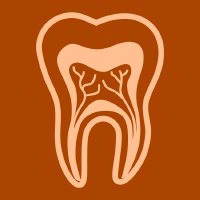Topic Editors



Advances in Dental Materials
Topic Information
Dear Colleagues,
In recent years, progress in material sciences and digital technologies has enabled various advancements in all fields of dentistry, prompting several paradigm shifts, such as from retention to adhesion, from the absence of toxicity to regeneration, and from an analogue workflow to a digital workflow. This Topic calls for high-quality research articles and clinical studies on metallic, polymeric, ceramic, and composite biomaterials applied in the fields of restorative dentistry, endodontics, oral and maxillo-facial surgery, dental implantology, periodontology, and orthodontics. We are pleased to invite you to contribute to our Topic on “Advances in Dental Materials” and we look forward to receiving your submissions.
Prof. Dr. Vincenzo D'Antò
Dr. Daniele Botticelli
Dr. Piero Antonio Zecca
Topic Editors
Keywords
- dental materials
- mechanical tests
- numerical simulations
- clinical trials
- biocompatibility
- regenerative medicine
- digital technologies
Participating Journals
| Journal Name | Impact Factor | CiteScore | Launched Year | First Decision (median) | APC | |
|---|---|---|---|---|---|---|

Applied Sciences
|
2.5 | 5.3 | 2011 | 18.4 Days | CHF 2400 | Submit |

Dentistry Journal
|
2.5 | 3.7 | 2013 | 26.2 Days | CHF 2000 | Submit |

Journal of Clinical Medicine
|
3.0 | 5.7 | 2012 | 16 Days | CHF 2600 | Submit |

Materials
|
3.1 | 5.8 | 2008 | 13.9 Days | CHF 2600 | Submit |

Medicina
|
2.4 | 3.3 | 1920 | 17.1 Days | CHF 2200 | Submit |

MDPI Topics is cooperating with Preprints.org and has built a direct connection between MDPI journals and Preprints.org. Authors are encouraged to enjoy the benefits by posting a preprint at Preprints.org prior to publication:
- Immediately share your ideas ahead of publication and establish your research priority;
- Protect your idea from being stolen with this time-stamped preprint article;
- Enhance the exposure and impact of your research;
- Receive feedback from your peers in advance;
- Have it indexed in Web of Science (Preprint Citation Index), Google Scholar, Crossref, SHARE, PrePubMed, Scilit and Europe PMC.

